Showing Spotlights 361 - 368 of 556 in category All (newest first):
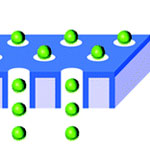 Delivering healthy proteins directly into human cells to replace malfunctioning proteins is considered one of the most direct and safe approaches for treating diseases. Controlled and long-term protein drug delivery has also been considered as one of the most promising biomedical applications of nanotechnology. So far, though, the effectiveness of protein therapy has been limited by low delivery efficiency and the poor stability of proteins, which are frequently broken down and digested by cells' protease enzymes before they reach their intended target. This not only makes the drugs ineffective, it can also cause unpredictable side effects such as inflammation, toxicity, and immune responses. The best way for the delivery of protein drugs without denaturation might be possible by exploiting the passive diffusion through a membrane without physical and chemical stresses. This can be achieved when pore sizes in a membrane are controlled to satisfy the single-file diffusion condition of protein drugs.
Delivering healthy proteins directly into human cells to replace malfunctioning proteins is considered one of the most direct and safe approaches for treating diseases. Controlled and long-term protein drug delivery has also been considered as one of the most promising biomedical applications of nanotechnology. So far, though, the effectiveness of protein therapy has been limited by low delivery efficiency and the poor stability of proteins, which are frequently broken down and digested by cells' protease enzymes before they reach their intended target. This not only makes the drugs ineffective, it can also cause unpredictable side effects such as inflammation, toxicity, and immune responses. The best way for the delivery of protein drugs without denaturation might be possible by exploiting the passive diffusion through a membrane without physical and chemical stresses. This can be achieved when pore sizes in a membrane are controlled to satisfy the single-file diffusion condition of protein drugs.
Aug 10th, 2010
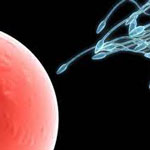 With fully conclusive findings about the toxicity of carbon nanotubes (CNTs) still up in the air, research on biomedical applications of CNTs is pushing full steam ahead. Adding to the list of potential concerns, a recent nanotoxicology study by a U.S.-Chinese research team looked into the impact of carbon nanotubes on male reproductive health. The translocation and biodistribution of nanoparticles are key factors in their toxicity evaluation in vivo. Although other nanoparticles such as gold and magnetic nanoparticles have been reported to enter testes in small quantities, it had not been established whether CNTs could enter or accumulate in the testis. This pilot study investigated the effects of intravenous injection of single and multiple doses of water-soluble multiwalled carbon nanotubes on the reproductive systems of male mice.
With fully conclusive findings about the toxicity of carbon nanotubes (CNTs) still up in the air, research on biomedical applications of CNTs is pushing full steam ahead. Adding to the list of potential concerns, a recent nanotoxicology study by a U.S.-Chinese research team looked into the impact of carbon nanotubes on male reproductive health. The translocation and biodistribution of nanoparticles are key factors in their toxicity evaluation in vivo. Although other nanoparticles such as gold and magnetic nanoparticles have been reported to enter testes in small quantities, it had not been established whether CNTs could enter or accumulate in the testis. This pilot study investigated the effects of intravenous injection of single and multiple doses of water-soluble multiwalled carbon nanotubes on the reproductive systems of male mice.
Aug 9th, 2010
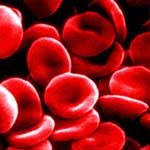 Numerous pathogens can cause bloodstream infections (sepsis) and the most straightforward cure is to remove the disease-causing factors from a patient's blood as quickly as possible. Several methods, like dialysis and plasma filtration/exchange, are already widely and routinely applied for this purpose. Demonstrating a novel use of nanomagnets, researchers in Switzerland have rapidly and selectively removed heavy metal ions, overdosed steroid drugs and proteins from human blood. This nanomagnet-based purification method avoids fouling of filter membranes and benefits from a high external surface area, and a correspondingly fast diffusion. Toxins or pathogens can be selectively removed from whole blood within minutes.
Numerous pathogens can cause bloodstream infections (sepsis) and the most straightforward cure is to remove the disease-causing factors from a patient's blood as quickly as possible. Several methods, like dialysis and plasma filtration/exchange, are already widely and routinely applied for this purpose. Demonstrating a novel use of nanomagnets, researchers in Switzerland have rapidly and selectively removed heavy metal ions, overdosed steroid drugs and proteins from human blood. This nanomagnet-based purification method avoids fouling of filter membranes and benefits from a high external surface area, and a correspondingly fast diffusion. Toxins or pathogens can be selectively removed from whole blood within minutes.
Jul 27th, 2010
 Researchers in the UK have now conducted experiments that explored the elementary question of what it is that makes some bacteria pathogenic, and some not? Based on their findings, they have demonstrated that a simple vesicle (nanocapsule) system can be used as a 'nano-Trojan horse' for controlling bacterial growth and infection. Integrated into wound dressings, this novel material can automatically detect infection by pathogenic bacteria and respond to this by releasing an antibiotic into the wound, and changing color to alert medical staff. The researchers show that pathogenic bacteria can be used to be the agents of their own destruction by releasing toxins that rupture nanocapsules containing an antimicrobial agent.
Researchers in the UK have now conducted experiments that explored the elementary question of what it is that makes some bacteria pathogenic, and some not? Based on their findings, they have demonstrated that a simple vesicle (nanocapsule) system can be used as a 'nano-Trojan horse' for controlling bacterial growth and infection. Integrated into wound dressings, this novel material can automatically detect infection by pathogenic bacteria and respond to this by releasing an antibiotic into the wound, and changing color to alert medical staff. The researchers show that pathogenic bacteria can be used to be the agents of their own destruction by releasing toxins that rupture nanocapsules containing an antimicrobial agent.
Jul 14th, 2010
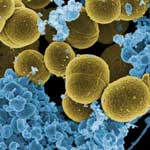 Life-threatening infectious diseases caused by antibiotic-resistant pathogens have been of great concern in both community and hospital settings. This increasing emergence of antibiotic-resistant strains of pathogens has necessitated the development of new antimicrobial surfaces and coatings. As antimicrobial surfaces have become popular in such areas as consumer products, public spaces such as schools and offices, and public transportation, the market for these coatings has quickly grown into a market worth hundreds of million of dollars. New work, by a team from Rensselaer Polytechnic Institute (RPI) has now combined the antimicrobial property of a cell lytic enzyme (lysostaphin) and the excellent properties of carbon nanotubes as an immobilization support in preparing nanocomposite paints that are highly effective against antibiotic-resistant strains of Staphylococcus aureus - methicillin-resistant Staphylococcus aureus (MRSA).
Life-threatening infectious diseases caused by antibiotic-resistant pathogens have been of great concern in both community and hospital settings. This increasing emergence of antibiotic-resistant strains of pathogens has necessitated the development of new antimicrobial surfaces and coatings. As antimicrobial surfaces have become popular in such areas as consumer products, public spaces such as schools and offices, and public transportation, the market for these coatings has quickly grown into a market worth hundreds of million of dollars. New work, by a team from Rensselaer Polytechnic Institute (RPI) has now combined the antimicrobial property of a cell lytic enzyme (lysostaphin) and the excellent properties of carbon nanotubes as an immobilization support in preparing nanocomposite paints that are highly effective against antibiotic-resistant strains of Staphylococcus aureus - methicillin-resistant Staphylococcus aureus (MRSA).
Jul 12th, 2010
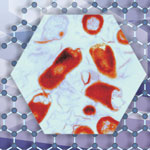 Researchers have made the surprising finding that graphene-based nanomaterials possess excellent antibacterial properties. Although antibacterial materials are widely used in daily life, and the antibacterial properties of nanomaterials are increasingly being explored and developed as commercial products, their cytotoxicity and biocompatibility has raised questions and concerns. Chinese researchers now found that graphene derivatives - graphene oxide, graphene oxide and reduced graphene oxide - can effectively inhibit bacterial growth. This is a significant finding as previous have proven that graphene, particularly graphene oxide, is biocompatible and cells can grow well on graphene substrates. Furthermore, while silver and silver nanoparticles have been well know to be antibacterial, they and other nanomaterials are often cytotoxic.
Researchers have made the surprising finding that graphene-based nanomaterials possess excellent antibacterial properties. Although antibacterial materials are widely used in daily life, and the antibacterial properties of nanomaterials are increasingly being explored and developed as commercial products, their cytotoxicity and biocompatibility has raised questions and concerns. Chinese researchers now found that graphene derivatives - graphene oxide, graphene oxide and reduced graphene oxide - can effectively inhibit bacterial growth. This is a significant finding as previous have proven that graphene, particularly graphene oxide, is biocompatible and cells can grow well on graphene substrates. Furthermore, while silver and silver nanoparticles have been well know to be antibacterial, they and other nanomaterials are often cytotoxic.
Jul 5th, 2010
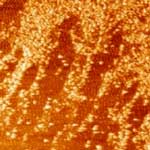 A U.S.-Japanese research team has now developed methods for synthesizing protein-sized polymer particles with a binding affinity and selectivity comparable to those of natural antibodies by combining molecular imprinting nanoparticle synthesis with a functional monomer optimization strategy. In effect, they have created a plastic antibody, an artificial version of the real thing. They have also demonstrated that it works in the bloodstream of a living animal. As a result, we can now consider synthetic polymer nanoparticles, prepared by an abiotic process in the chemical laboratory, as alternatives to biological macromolecules. Applications could include antidotes for toxins, protein purification and therapies that currently use antibodies.
A U.S.-Japanese research team has now developed methods for synthesizing protein-sized polymer particles with a binding affinity and selectivity comparable to those of natural antibodies by combining molecular imprinting nanoparticle synthesis with a functional monomer optimization strategy. In effect, they have created a plastic antibody, an artificial version of the real thing. They have also demonstrated that it works in the bloodstream of a living animal. As a result, we can now consider synthetic polymer nanoparticles, prepared by an abiotic process in the chemical laboratory, as alternatives to biological macromolecules. Applications could include antidotes for toxins, protein purification and therapies that currently use antibodies.
Jun 11th, 2010
 The development of artificial muscles is one of the key areas for bionic enhancements or replacements. The discovery of the electromechanical actuation properties of single-walled carbon nanotubes and the complex behavior of multi-walled carbon nanotubes has led to the development of various carbon nanotube actuators. Besides artificial muscles, potential applications include microelectro-mechanical systems (MEMS), biomimetic micro-and nanorobots, and micro fluidic devices. Recently, a new class of active system, carbon nanotube/polymer composite actuators, has received great attention with regard to macroscopic artificial muscle applications. It has been demonstrated that successful introduction of the highly conductive CNTs could significantly enhance the polymer nanocomposite's electrical, thermal, mechanical, and interface properties, thus providing a suitable material for novel artificial muscle-like actuator investigations.
The development of artificial muscles is one of the key areas for bionic enhancements or replacements. The discovery of the electromechanical actuation properties of single-walled carbon nanotubes and the complex behavior of multi-walled carbon nanotubes has led to the development of various carbon nanotube actuators. Besides artificial muscles, potential applications include microelectro-mechanical systems (MEMS), biomimetic micro-and nanorobots, and micro fluidic devices. Recently, a new class of active system, carbon nanotube/polymer composite actuators, has received great attention with regard to macroscopic artificial muscle applications. It has been demonstrated that successful introduction of the highly conductive CNTs could significantly enhance the polymer nanocomposite's electrical, thermal, mechanical, and interface properties, thus providing a suitable material for novel artificial muscle-like actuator investigations.
May 19th, 2010
 Delivering healthy proteins directly into human cells to replace malfunctioning proteins is considered one of the most direct and safe approaches for treating diseases. Controlled and long-term protein drug delivery has also been considered as one of the most promising biomedical applications of nanotechnology. So far, though, the effectiveness of protein therapy has been limited by low delivery efficiency and the poor stability of proteins, which are frequently broken down and digested by cells' protease enzymes before they reach their intended target. This not only makes the drugs ineffective, it can also cause unpredictable side effects such as inflammation, toxicity, and immune responses. The best way for the delivery of protein drugs without denaturation might be possible by exploiting the passive diffusion through a membrane without physical and chemical stresses. This can be achieved when pore sizes in a membrane are controlled to satisfy the single-file diffusion condition of protein drugs.
Delivering healthy proteins directly into human cells to replace malfunctioning proteins is considered one of the most direct and safe approaches for treating diseases. Controlled and long-term protein drug delivery has also been considered as one of the most promising biomedical applications of nanotechnology. So far, though, the effectiveness of protein therapy has been limited by low delivery efficiency and the poor stability of proteins, which are frequently broken down and digested by cells' protease enzymes before they reach their intended target. This not only makes the drugs ineffective, it can also cause unpredictable side effects such as inflammation, toxicity, and immune responses. The best way for the delivery of protein drugs without denaturation might be possible by exploiting the passive diffusion through a membrane without physical and chemical stresses. This can be achieved when pore sizes in a membrane are controlled to satisfy the single-file diffusion condition of protein drugs. 
 Subscribe to our Nanotechnology Spotlight feed
Subscribe to our Nanotechnology Spotlight feed





